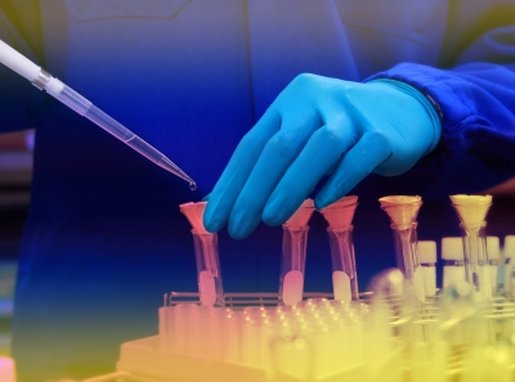How the New FDA Guidance on Biocompatibility Affects Medical Device Manufacturers
The main theme running through FDA's guidance on ISO 10993-1 is that every medical device should be assessed for its specific risk to the end user.
December 20, 2016

The main theme running through FDA's guidance on ISO 10993-1 is that every medical device should be assessed for its specific risk to the end user.
Audrey Turley and Thor Rollins
In June 1906, President Theodore Roosevelt signed into law the Food and Drug Act, which addressed "adulterated" products. Adulterated includes the addition of fillers of reduced "quality or strength;" coloring to conceal "damage or inferiority;" formulation with additives "injurious to health;" or the use of "filthy, decomposed, or putrid" substances in a product. It took until 1995 for FDA to release an official guidance specific to medical device regulation.
This document, known as the "blue book," was the basis of biocompatibility regulation for decades. FDA published a draft guidance document on the "Use of International Standard ISO 10993-1 'Biological evaluation of medical devices--Part 1: Evaluation and testing within a risk management process'" in April 2013, and this draft marked the first updated direction regarding biocompatibility from FDA. A final version was issued in June of this year, which was officially adopted as the replacement for the G95 Bluebook memorandum on September 14, 2016.
During the three years that the document circulated as a draft, it doubled in length providing great insight into FDA's regulatory expectations and the agency's interpretation of the ISO 10993-1 guidelines in general. FDA guidance document on the use of ISO 10993-1 outlines the testing approach necessary to bring a medical device to market. Medical device manufacturers need to consider FDA's interpretation of the ISO 10993-1 standard.
This guidance document can be divided into three areas: current thinking, new trends, and justification information. Current thinking references statements or thought processes that are recent trends from FDA as seen in feedback from medical device submissions. New themes are areas of updated insight or clarification of approaches to be taken. Justification information provides alternatives to the standard in vitro/in vivo biocompatibility tests in addressing specific biological endpoints.
Current Thinking
The guidance reflects the current trends that have been considered and adopted by FDA.
FDA expands what constitutes "contact" with a medical device to apply to practitioners. Prior to this document, FDA previously only considered biocompatibility testing for "contact" with patients. The risks devices pose to the practitioner need to be identified and assessed based on how the contact occurs without personal protective equipment (PPE). Handles and other parts of devices should be assessed based on how a practitioner would come into contact without wearing PPE; i.e. if the handle of a device will never be touched with a bare hand, then biocompatibility testing would not need to take place. The guidance does address PPE, however, and specifically states that "masks or gloves intended for protective purposes by clinical practitioners should be assessed for biocompatibility."
The guidance expands upon patient "contact" to include indirect tissue contact through a fluid or gas path. However, if there is no contact to the patient (or practitioner), then no testing is needed. This applies in particular to electronic components that support medical device equipment, but have no contact.
The guidance now accounts for specific device types. Many device types have existing parallel standards with specific information or risks to address based on use, and these standards supersede ISO 10993-1. Recognized Consensus Standards can be checked for acceptance on the FDA website.
There is a new 10-page section, "Section III. Risk Management for Biocompatibility Evaluations." Risk is not a new term when considering biological evaluations, but, the approach was not always clear. A large part of risk identification starts with materials and processes in medical device manufacturing. Materials can be supplied with documentation to support their biocompatibility which ensures that what is going into the device is safe, but processes including washing, rinses, anodization/passivation, and sterilization (to name a few) also impact the final medical device. FDA "does not clear or approve individual materials that are used in the fabrication of medical devices." Testing for biocompatibility considerations should be performed on the device in its final and finished form. Once the risks have been identified, mitigation through testing and/or literature research occurs. The selection of tests to be performed should be based on history of materials, patient contact, and device-specific guidance (if available).
The guidance document now includes very specific language regarding many of the biological endpoints that are addressed through the ISO 10993 standard series. There are a few current trends that were expected interpretations of the applicable standard, but now these expectations are written rather than implied. Hemolysis testing can be performed either directly or indirectly, based on contact of the device. The guidance document clarifies that devices "having direct contact with circulating blood" should go through hemolysis, complement, and thrombogenicity testing regardless of contact time.
An entire new section on Chemical Assessment was added in the final version of the guidance document. Although the section is new, the practice is not. FDA outlines when a chemical assessment may be a useful part of a Biological Safety Evaluation:
Novel material not used previously in a legally marketed device in the U.S.
New material or process used to modify the material formulation
To mitigate risks of genotoxicity, carcinogenicity, and reproductive toxicity
To address device material changes that occur over time
To address any unexpected findings in the biocompatibility panel performed to determine if further mitigation is necessary
There is new emphasis on the requirement to address chronic toxicity and carcinogenicity. These test methods can take more time and be more expensive, but chemistry with a toxicological evaluation can be a useful tool to mitigate that cost and turn-around time.
New Trends
The biggest change to the document is the addition of a risk-based approach to biocompatibility. The concept is to develop a plan to address the biocompatibility risk of the device. This plan is also called a biological evaluation plan (BEP). The BEP first identifies the risks that need to be taken into account for the biocompatibility assessment. Once the risks have been identified, then literature research is performed on the materials and processes that are used to manufacture the device. These materials and processes are then compared to approved predicate devices used in the industry, including their master files; this practice helps to identify risks and tests already established in the industry that are applicable to the device that is being evaluated. The predicate devices should not just focus on the same material and intended use, but should also focus on as much processing information as possible.
One approach that is often used to address risk is to use materials that already have a master file with FDA. An Annex was added to the guidance document to include what information needs to be contained in master files to allow them to be helpful for the assessment. Once the risks are identified, then the appropriate testing can be determined. This should include some discussion of the applicability of chemistry testing with a toxicological risk assessment to address biological endpoints laid out in the guidance document.
Another impactful addition to the guidance is the inclusion of the Threshold for Toxicological Concern (TTC) concept endorsed by CDRH. This is important because it can reduce the amount of compounds from the chemistry that need to be addressed for a particular device. If the compound found in the extracts is below the applicable TTC and not on the TTC exclusion list, then it does not need to be assessed further for specific endpoints.
The guidance also addresses how clinical data from a predicate device can be helpful to support the biocompatibility risk assessment as long as the new device has been manufactured with the same materials and using the same process. All these considerations can be included in the BEP and can be given to FDA for review before starting the anticipated tests. This is great to do beforehand to prove that all risks have been identified and the mitigation plan is acceptable before you begin.
Other important new changes and additions:
Permanent implants need to extract at 72 hours for cytotoxicity testing.
Complement activation has typically included two proteins C3a and SC5b-9, but the guidance has changed this requirement to only include C3a. Some laboratories still offer SC5b-9 as it could scientifically be a more appropriate protein endpoint for the Complement Activation requirement that incorporates proteins from the intrinsic and extrinsic pathways.
FDA specifically calls for Bacterial Endotoxin Testing (BET) for all implant devices, due to the possible contact with the lymphatic system.
Genotoxicity testing is covered in a battery of tests. These tests went from three to two: Ames and a mammalian assay, either Mouse Lymphoma or Chromosome Aberration. Failure in one of these tests needs to be addressed through a failure investigation; chemistry testing and literature research are useful tools.
Genotoxicity testing cannot be used to assess carcinogenicity. If your device requires carcinogenicity evaluations, then FDA is expecting to see chemical characterization to address this endpoint.
In the FDA table where device categorization and corresponding biological endpoints are outlined, a new column for Material Mediated Pyrogen testing has been added. This is not a new requirement, simply a clarification on what was previously required under systemic toxicity testing.
Justification Information
The main proposed method to justify not using specific animal testing is using chemical characterization through extractable and leachable (E&L) testing. A toxicological assessment can then be used to address the following biological endpoints: systemic toxicity, genotoxicity, chronic toxicity and carcinogenicity. When evaluating a change in a device (i.e. colorant), the impact to the portion that contacts the patient needs to be assessed. If a device change or modification does not impact the portion of the device that contacts the patient or practitioner, then biocompatibility can be addressed without testing. If the change impacts the part of the device that contacts the patient or practitioner, then a risk evaluation needs to be performed to address the change. A material comparison with the predicate device can be performed, and chemical characterization information and/or surface analysis of the device can help identify risk as well. Throughout the entire document there are suggestions and guidelines for justifications to address risk through alternate avenues. Biocompatibility should be based on risk assessed through a series of scientific decisions and reasoning.
Conclusion
The new FDA guidance document has been a welcome addition to other documents that direct the evaluation of medical devices. The main theme running through the document is that every medical device should be assessed for its specific risk to the end user. This risk evaluation then leads the specific tests that are needed to mitigate the identified risks. Since it is difficult to address all the possible risks associated with a device, extractable and leachable testing can be used to help fill in gaps and fulfill the risk evaluation. In the end, this approach places a higher burden on the initial assessment of the device but, when done properly, results in a shorter time to market and a safer device.
Audrey Turley is a research scientist at Nelson Laboratories Inc. Reach her at [email protected].
Thor Rollins is a senior scientist at Nelson Laboratories.
[Image courtesy of SUWIT-RITJAROON/FREEDIGITALPHOTOS.NET]
You May Also Like

.png?width=300&auto=webp&quality=80&disable=upscale)
